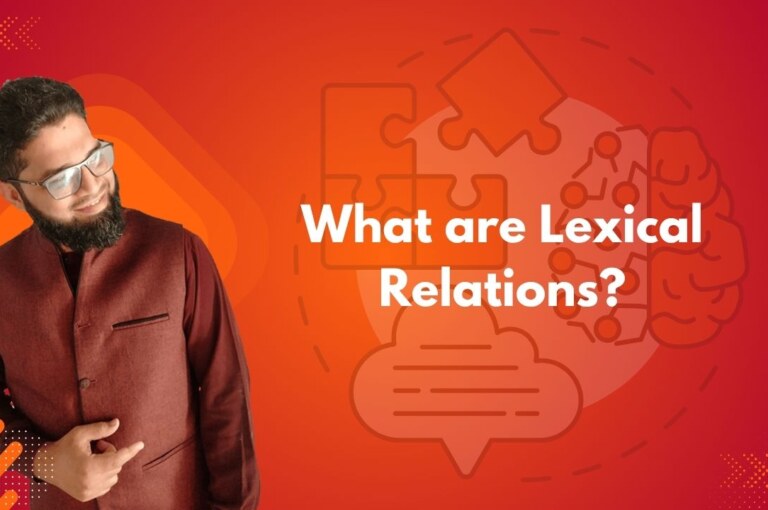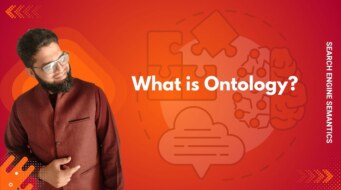Lexical relations are the meaningful connections between words based on their semantic properties. They include types like synonymy, antonymy, hyponymy, and more, which help us understand how words relate in meaning and usage. Studying these relations is key to grasping how language conveys complex ideas efficiently.
So, in short Lexical Relations describe the ways in which words are interconnected in meaning, forming structured relationships that influence language comprehension, categorization, and semantic organization.
Types of Lexical Relations
1. Synonymy
Synonymy refers to words that have similar or identical meanings, even if they differ in form.
Examples:
- Big ↔ Large
- Doctor ↔ Physician
- Begin ↔ Start
While synonyms may be interchangeable in some contexts, subtle differences in connotation or usage often exist.
2. Antonymy
Antonymy refers to words with opposite meanings. Antonyms are classified into different types:
2.1 Gradable Antonyms
- Represent opposites along a spectrum with varying degrees.
- Allow comparative forms (e.g., bigger, smaller).
Examples:
- Wide ↔ Narrow
- Short ↔ Tall
- Hot ↔ Cold
2.2 Non-Gradable (Complementary) Antonyms
Represent absolute opposites with no intermediate state.
Examples:
- Alive ↔ Dead
- Married ↔ Unmarried
- Present ↔ Absent
2.3 Converse (Relational) Antonyms
Pairs where one word implies the existence of the other.
Examples:
- Buy ↔ Sell
- Parent ↔ Child
- Teacher ↔ Student
3. Hyponymy & Hypernymy
Hyponymy and hypernymy describe hierarchical word relationships.
3.1 Hypernym (Superordinate Term)
A broad, general term that includes more specific words.
Examples:
- Color is the hypernym of red, blue, and yellow.
- Animal is the hypernym of dog, cat, and elephant.
3.2 Hyponym (Subordinate Term)
A more specific word under a broader category.
Examples:
- Crimson, violet, and lavender are hyponyms of purple.
- Daisy and rose are hyponyms of flower.
4. Holonymy & Meronymy
These relationships describe whole-part associations between words.
4.1 Holonym (Whole-to-Part Relationship)
A word that denotes the whole to which smaller parts belong.
Examples:
- Table is the holonym of table leg.
- Car is the holonym of engine, tires, and seats.
4.2 Meronym (Part-to-Whole Relationship)
A word that denotes a part of a larger whole.
Examples:
- Feather is a meronym of bird.
- Leaf is a meronym of tree.
5. Homophony, Homonymy, and Polysemy
These terms describe words that share spelling and pronunciation similarities, but differ in meaning.
5.1 Homophony
Words that sound the same but have different meanings and spellings.
Examples:
- Sea (body of water) ↔ See (to look)
- Flour (used in baking) ↔ Flower (a plant)
5.2 Homonymy
Words that share the same spelling and pronunciation but have unrelated meanings.
Examples:
- Bank (financial institution) ↔ Bank (side of a river)
- Bear (animal) ↔ Bear (to endure)
5.3 Polysemy
Words with multiple related meanings.
Examples:
- Foot (body part) → Foot (base of a table) → Foot (bottom of a mountain)
- Love (as a verb: “I love reading”) → Love (as a noun: “His love for books”)
6. Metonymy & Synecdoche
These relationships involve the substitution of one term for another closely related concept.
6.1 Metonymy
A word or phrase represents something closely associated with it.
Examples:
- Table 14 needs water → (“Table 14” represents the customers at the table).
- I ate the whole bag → (Refers to the contents, not the physical bag).
- The White House issued a statement → (Refers to the U.S. government, not the building).
6.2 Synecdoche (A Specific Type of Metonymy)
A part represents the whole (or vice versa).
Examples:
- All hands on deck → (“Hands” represent the entire crew).
- Wheels → (Can represent an entire car).
Summary Table of Word Relationships
| Term | Definition | Example |
|---|---|---|
| Synonymy | Words with similar meanings. | Big ↔ Large, Doctor ↔ Physician |
| Antonymy | Words with opposite meanings. | Hot ↔ Cold, Married ↔ Unmarried |
| Hyponymy | Specific term under a broader category. | Rose is a hyponym of Flower |
| Hypernymy | General term that includes more specific words. | Color is a hypernym of Red, Blue, Yellow |
| Holonymy | A whole that contains smaller parts. | Car is the holonym of Engine, Tires, Seats |
| Meronymy | A part of a larger whole. | Leaf is a meronym of Tree |
| Homophony | Words that sound the same but have different meanings and spellings. | Sea ↔ See, Flour ↔ Flower |
| Homonymy | Words with the same spelling and pronunciation but unrelated meanings. | Bank (money) ↔ Bank (river) |
| Polysemy | Words with related meanings. | Foot (body part) ↔ Foot (bottom of a mountain) |
| Metonymy | A word represents something closely associated with it. | The White House issued a statement (refers to the U.S. government) |
| Synecdoche | A part represents the whole or vice versa. | Wheels (refers to a car) |
So, understanding these linguistic relationships helps in language learning, semantics, and natural language processing (NLP). Whether for SEO, machine learning, or everyday communication, recognizing how words interact enhances both clarity and precision in language use.
Wrap Up
In conclusion, lexical relations serve as the backbone of semantic understanding in any language. You can gain valuable insight into the structure and function of vocabulary, by analyzing how words are connected—whether through similarity, opposition, hierarchy, or association. These relations not only enrich our linguistic knowledge but also enhance computational models, language learning, and effective communication.
Want to Go Deeper into SEO?
Explore more from my SEO knowledge base:
▪️ SEO & Content Marketing Hub — Learn how content builds authority and visibility
▪️ Search Engine Semantics Hub — A resource on entities, meaning, and search intent
▪️ Join My SEO Academy — Step-by-step guidance for beginners to advanced learners
Whether you’re learning, growing, or scaling, you’ll find everything you need to build real SEO skills.
Feeling stuck with your SEO strategy?
If you’re unclear on next steps, I’m offering a free one-on-one audit session to help and let’s get you moving forward.





Leave a comment